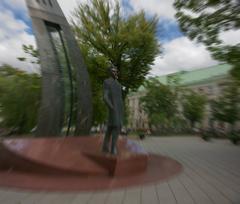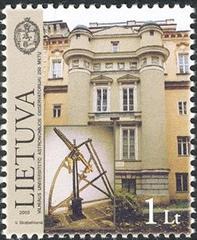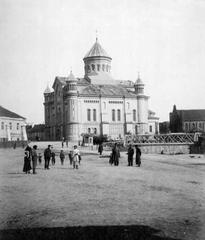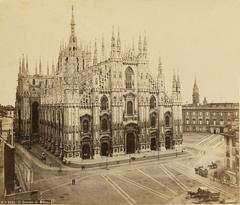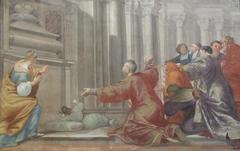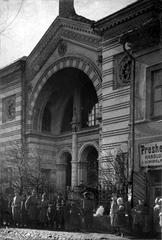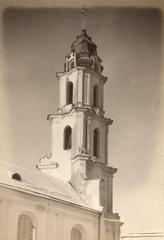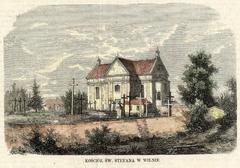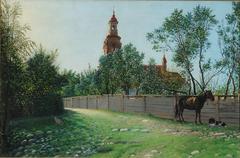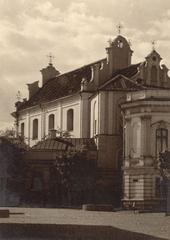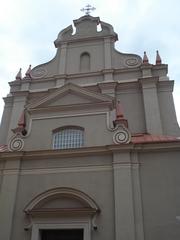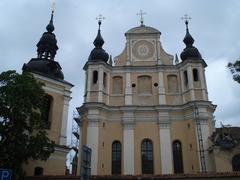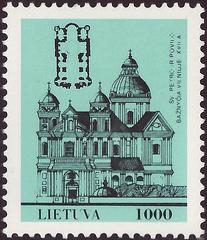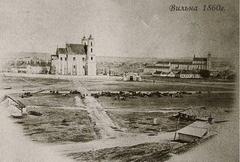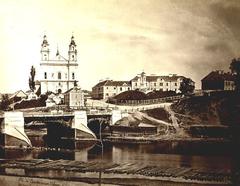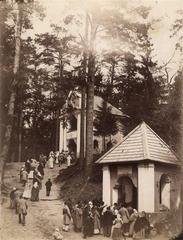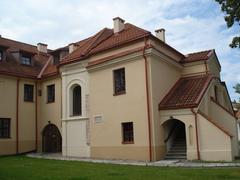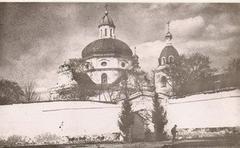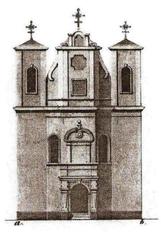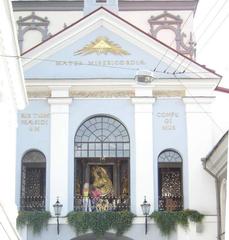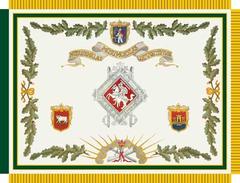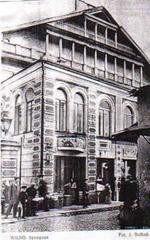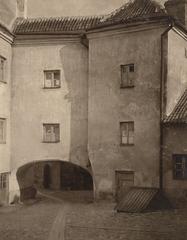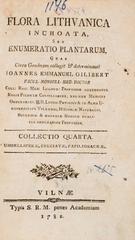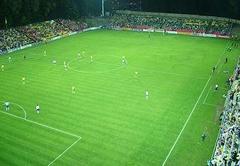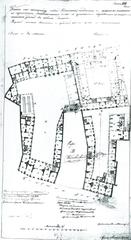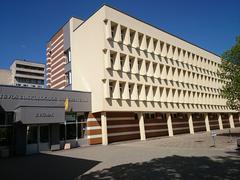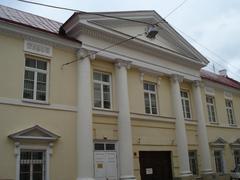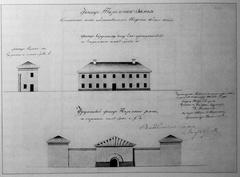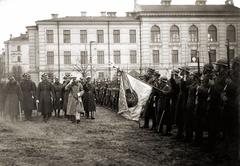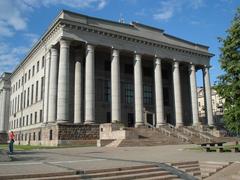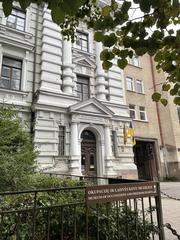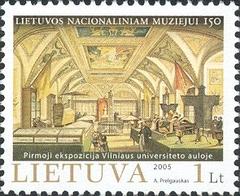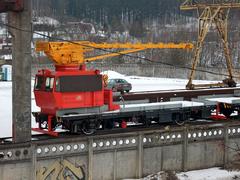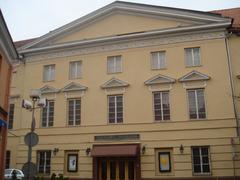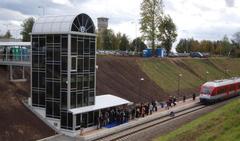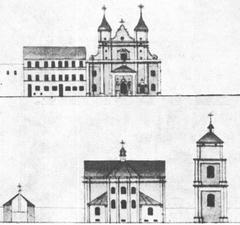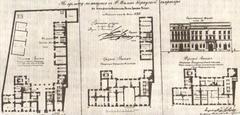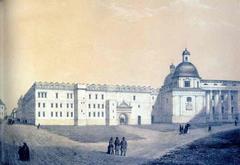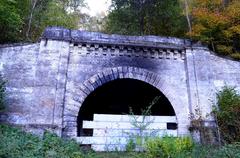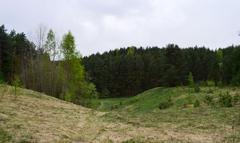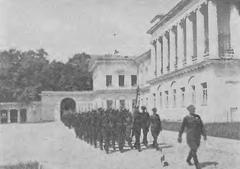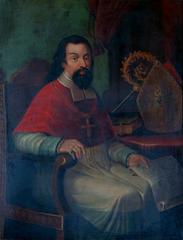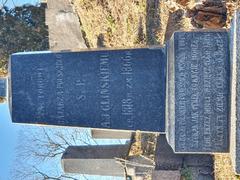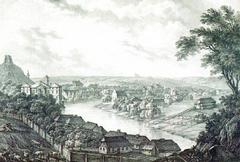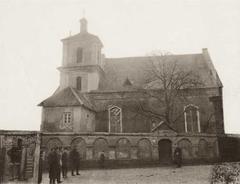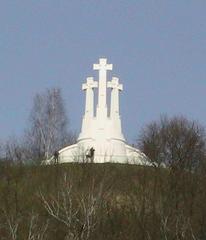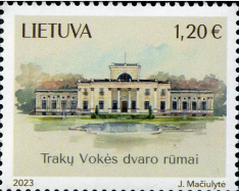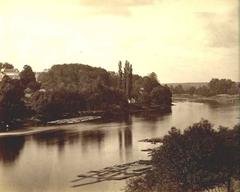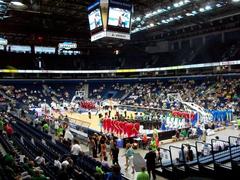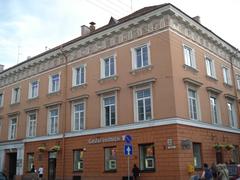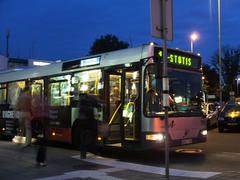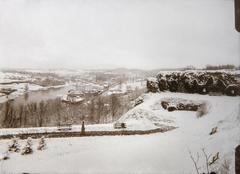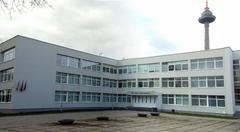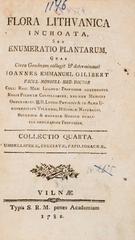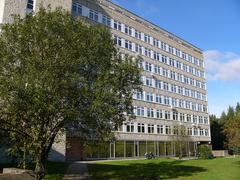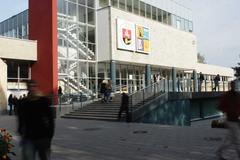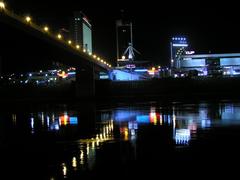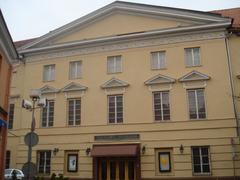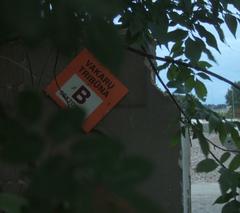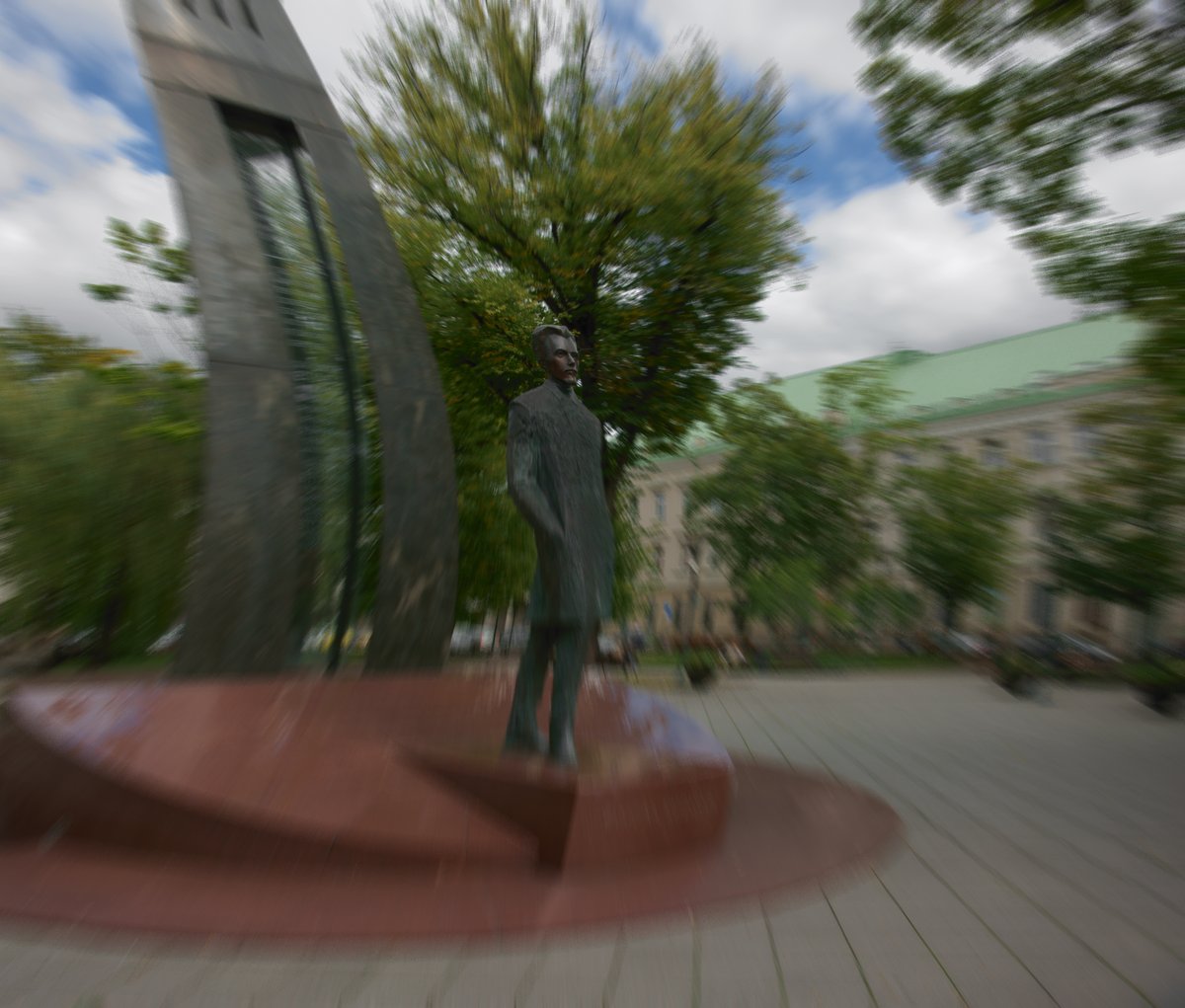
Visiting Vincas Kudirka Square: History, Tips, and Visitor Information
Date: 18/07/2024
Introduction to Vincas Kudirka Square
Vincas Kudirka Square in Vilnius, Lithuania, is not just a public space but a symbol of the nation’s rich historical and cultural tapestry. Named after Dr. Vincas Kudirka, a pivotal figure in the Lithuanian national revival, the square has witnessed centuries of transformation, mirroring Lithuania’s own journey through periods of occupation, resistance, and resurgence. From its early days as a bustling marketplace to its current status as a vibrant hub of cultural activity, Vincas Kudirka Square encapsulates the spirit of Lithuanian identity and resilience. This comprehensive guide delves into the square’s historical significance, cultural impact, and practical visitor information, offering a detailed exploration of one of Vilnius’s most cherished landmarks.
Table of Contents
- [Introduction](#introductionintroduction-to-vincas-kudirka-square)
- [Exploring the History and Significance of Vincas Kudirka Square](#exploring-the-history-and-significance-of-vincas-kudirka-squareexploring-the-history-and-significance-of-vincas-kudirka-square)
- [From Humble Beginnings to Imperial Grandeur (16th - 19th Century)](#from-humble-beginnings-to-imperial-grandeur-16th---19th-centuryfrom-humble-beginnings-to-imperial-grandeur-16th---19th-century)
- [A Period of Transition and National Identity (Late 19th - Early 20th Century)](#a-period-of-transition-and-national-identity-late-19th---early-20th-centurya-period-of-transition-and-national-identity-late-19th---early-20th-century)
- [Honoring a National Icon (1930s)](#honoring-a-national-icon-1930shonoring-a-national-icon-1930s)
- [Soviet Era (1940s - 1980s)](#soviet-era-1940s---1980ssoviet-era-1940s---1980s)
- [Reclaiming the Square (1990s - Present)](#reclaiming-the-square-1990s---presentreclaiming-the-square-1990s---present)
- [Visitor Information](#visitor-informationvisitor-information)
- [Exploring Vincas Kudirka’s Legacy in Vilnius](#exploring-vincas-kudirkas-legacy-in-vilniusexploring-vincas-kudirkas-legacy-in-vilnius)
- [Top Attractions](#top-attractionstop-attractions)
- [Visitor Tips](#visitor-tipsvisitor-tips)
- [Conclusion](#conclusionconclusion)
- [FAQ](#faqfaq)
- [References](#referencesreferences)
Exploring the History and Significance of Vincas Kudirka Square
From Humble Beginnings to Imperial Grandeur (16th - 19th Century)
The square’s story begins outside the city walls in the 16th century. Initially a humble marketplace known as the Lower Market Square, it served as a central trading point for local farmers and artisans. The era saw the construction of the Church of St. Nicholas, a red-brick edifice that still stands today, offering a glimpse into the square’s early years.
The 18th century brought significant changes with the Russian Empire’s influence. Following Vilnius’ annexation into the Russian Empire, the square underwent a dramatic transformation under Tsar Nicholas I. Renamed ‘Governor’s Square’ (Gubernatoriaus aikštė), it became a symbol of imperial power. The construction of the imposing Vilnius City Hall in the late 18th century, designed in the stately neoclassical style, solidified the square’s new role as a center of administrative power.
A Period of Transition and National Identity (Late 19th - Early 20th Century)
The late 19th and early 20th centuries witnessed a resurgence of Lithuanian national identity. The square, still bearing the name of the former Tsar, became a stage for expressions of Lithuanian culture and resistance against Russification policies. It was during this time that Dr. Vincas Kudirka, a prominent Lithuanian poet, writer, and physician, rose to prominence. A key figure in the Lithuanian national revival movement, Kudirka penned ‘Tautiška giesmė’ (The National Anthem) in 1898, a powerful song that embodied the Lithuanian spirit and yearning for independence.
Honoring a National Icon (1930s)
In 1930, a decade after Lithuania regained its independence, the square was officially renamed in honor of Vincas Kudirka. This act held deep symbolic significance, cementing Kudirka’s legacy as a national icon and associating the square with the ideals of Lithuanian independence and cultural identity. A monument dedicated to Kudirka, initially planned for the square, faced delays due to political turmoil and financial constraints.
Soviet Era (1940s - 1980s)
The square’s identity was once again challenged during the Soviet occupation of Lithuania (1940-1991). Renamed ‘Soviet Constitution Square’ (Sovietinės Konstitucijos aikštė), it was repurposed to host Soviet parades and propaganda events. The monument to Kudirka, deemed inappropriate by the Soviet regime, was removed in 1950.
Despite the suppression of Lithuanian identity, the square continued to evolve. The construction of the modern Lietuva Cinema in 1965, a prime example of Soviet modernist architecture, added a new dimension to the square’s landscape. This period also saw the development of surrounding areas, with new buildings reflecting the architectural styles prevalent during the Soviet era.
Reclaiming the Square (1990s - Present)
With the collapse of the Soviet Union and Lithuania’s re-establishment of independence in 1990, Vincas Kudirka Square once again became a focal point for national celebration and remembrance. The square’s original name was reinstated, and a new monument to Vincas Kudirka, designed by sculptor Gediminas Jokūbonis, was erected in 1998. This bronze statue, depicting a thoughtful Kudirka seated on a granite pedestal, stands as a powerful symbol of Lithuania’s resilience and the enduring legacy of its national anthem.
Today, Vincas Kudirka Square thrives as a vibrant public space, hosting a variety of events throughout the year. From concerts and festivals to political rallies and public gatherings, the square continues to be a stage for Lithuanian life, reflecting the country’s dynamic present while honoring its complex past. The square’s evolution, from a humble marketplace to a symbol of imperial power and finally to a cherished public space, embodies the resilience and spirit of Lithuania and its people.
Visitor Information
Visiting Hours and Tickets: Vincas Kudirka Square is open to the public 24/7. There is no entrance fee, making it an accessible attraction for all.
Special Events: The square hosts numerous events throughout the year, including national celebrations, concerts, and cultural festivals. Check the local event calendar for up-to-date information.
Guided Tours: Several guided tours are available that cover the historical and cultural significance of the square and its surroundings. Booking in advance is recommended, especially during peak tourist seasons.
Best Spots for Photography: The monument to Vincas Kudirka and the Church of St. Nicholas are popular spots for photography. The square’s blend of historical and modern architecture provides a picturesque backdrop.
Nearby Attractions: The square is centrally located, making it easy to explore other historical sites in Vilnius. Nearby attractions include Vilnius Cathedral, Gediminas Tower, and the Vilnius Old Town.
Accessibility: The square is wheelchair accessible, with smooth pathways and ramps ensuring ease of movement for all visitors.
Exploring Vincas Kudirka’s Legacy in Vilnius
Top Attractions
- Vincas Kudirka Square: The central hub named after the national icon.
- Museum of Lithuania Minor and Vytautas the Great War Museum: Offers valuable insights into Lithuanian history.
- Palace of the Grand Dukes of Lithuania: Showcases the country’s rich history.
- National Museum of Lithuania: Provides an overview of Lithuanian history, culture, and art.
- Gediminas’ Tower: Offers stunning views of Vilnius, allowing appreciation of the city from a different perspective.
Visitor Tips
- Free Walking Tours: Join a free walking tour starting from the square to get acquainted with the city and its history.
- Relax and Observe: Find a bench and soak in the lively atmosphere of the square, observing locals going about their day.
- Evening Stroll: Visit the square in the evening when it’s beautifully illuminated, creating a magical ambiance.
- Museum Visits: Allocate sufficient time for museum visits and consider guided tours for deeper understanding.
- Photography: Capture stunning photos of Vilnius from Gediminas’ Tower and other scenic spots.
Conclusion
Vincas Kudirka Square stands as a testament to Lithuania’s enduring spirit and rich cultural heritage. Through its various transformations, from a humble marketplace to a symbol of imperial power and later a site of Soviet propaganda, the square has continuously evolved while retaining its significance in Lithuanian history. Today, it serves as a vibrant public space where locals and tourists alike can gather to celebrate, reflect, and connect with the nation’s past and present. Whether you’re drawn by its historical monuments, cultural events, or simply the opportunity to bask in the atmosphere of a city that has overcome immense challenges, Vincas Kudirka Square offers a unique and enriching experience.
FAQ
What are the visiting hours for Vincas Kudirka Square?
- The square is open 24/7.
Is there an entrance fee to visit the square?
- No, the square is free to access.
Are there any guided tours available?
- Yes, several guided tours are available that explore the square’s history and significance.
What are the best spots for photography?
- The monument to Vincas Kudirka and the Church of St. Nicholas are highly recommended spots.
Are there any special events held at the square?
- The square hosts various events throughout the year, including concerts and national celebrations.
